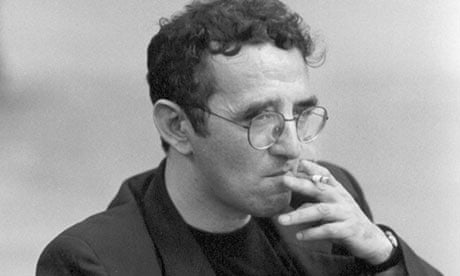He's been compared to James Dean and described as the "Kurt Cobain of
Latin-American literature", but the real Roberto Bolaño was very different to the myth created by the North American cultural establishment, according to the author's friend and fellow novelist Horacio Castellanos Moya.
Coverage of the late Chilean author, writes Moya in an acerbic essay for La Nacion, reprinted in English in Guernica, emphasises his tumultuous youth, his decision to drop out of high school and become a poet, his imprisonment in Chile during the coup d'état, his itinerant existence in Europe, his presumed drug addiction and premature death.
He is portrayed as a cross between Arthur Rimbaud and the Beats, but Moya says that "the majority of critics have passed over the fact that Bolaño didn't die as a result of drug or alcohol abuse, but from a case of poorly cared-for pancreatitis that had destroyed his liver; or that his case was more similar to those of Balzac or Proust, who also died at 50 after a tremendous work effort, than it was to those of North American pop idols".
Moya, born in Honduras but now living in Japan, had told himself he
wasn't going to say or write anything about Bolaño again, but he was
inspired to tackle the subject after his friend Sarah Pollack, a professor at a New York university, sent him an academic essay on the construction of the myth around the author.
Bolaño's work has grown hugely popular since his death aged 50 in 2003. His novel The Savage Detectives was one of the New York Times's top 10 books of 2007, and 2666 was on the same list the following year. This March, Picador acquired 11 novels by the author, including The Third Reich, finished shortly before his death and due for publication in 2011.
Moya believes that, as the magic realism of Gabriel García Márquez
began to lose its luster for the North American reader, the cultural
establishment went looking for something new, landing upon the
"visceral realism" of The Savage Detectives and deciding it would be
"the next big thing, the new One Hundred Years of Solitude, if you
will".
The North American edition of the book, he says, included a photo of a
post-adolescent Bolaño. "This nostalgic evocation of the rebel counterculture of the 60s and 70s was part of a finely-tuned strategy," says Moya. "The construction of the myth preceded the great launch of the work."
His friend, he believes, "would have found it amusing to know they
would call him the James Dean, the Jim Morrison, or the Jack Kerouac
of Latin American literature". What is not so amusing is his and Pollack's assertion that "American readers, with The Savage Detectives, want to confirm their worst paternalistic prejudices about Latin America ... like the superiority of the Protestant work ethic or the dichotomy according to which North Americans see themselves as workers, mature, responsible, and honest, while they see their neighbours to the south as lazy, adolescent, reckless, and delinquent."
